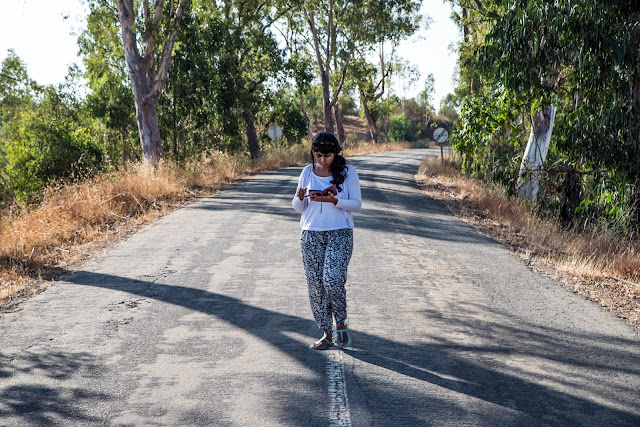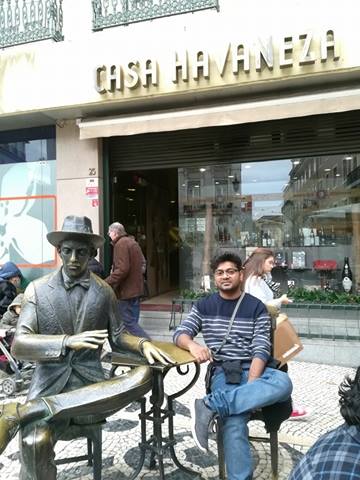Goa and Portugal – links and living heritage
Chenelle Rodrigues
Earthen houses of Goa (India) and Alentejo (Portugal): Comparison of Local Building Cultures and Conservation Approaches
The research is part of Chennelle post-master’s DSA-Earthen Architecture and Heritage programme at CRAterre Laboratory, the International Centre for Earthen Architecture at the École Nationale Supérieur d'Architecture de Grenoble – France.
Alentejo and Goa share a common architectural heritage, that which appears to be houses built in layers of mud. How were these houses built? Was there an exchange of mud-building techniques during the 450 years of Portuguese reign in Goa? During her two-month stay in Portugal funded by the Fundaçao Oriente, Chenelle describes her experiences with Portuguese architecture and culture, and their resemblances to Goa…
Photo
credits: Rui Cambraia
Photo credits: Rui Cambraia
Chenelle Rodrigues
Earthen houses of Goa (India) and Alentejo (Portugal): Comparison of Local Building Cultures and Conservation Approaches
The research is part of Chennelle post-master’s DSA-Earthen Architecture and Heritage programme at CRAterre Laboratory, the International Centre for Earthen Architecture at the École Nationale Supérieur d'Architecture de Grenoble – France.
Alentejo and Goa share a common architectural heritage, that which appears to be houses built in layers of mud. How were these houses built? Was there an exchange of mud-building techniques during the 450 years of Portuguese reign in Goa? During her two-month stay in Portugal funded by the Fundaçao Oriente, Chenelle describes her experiences with Portuguese architecture and culture, and their resemblances to Goa…
In retrospect, I might have been too ambitious, a tad overenthusiastic, and maybe, a tiny bit reckless – I could not speak Portuguese, did not drive a car, and yet decided to make base in a tiny village called Mourão along the Eastern border of Portugal while researching the ‘Earthen Houses of Alentejo’. Though much of Mourão’s population belongs to the senior age group, who had information valuable to my research, only a few could speak English or French (languages I speak). Public transport too was limited to a couple of buses a day. And yet, I managed to work on my research. How?
The people were helpful, kind and curious about my research topic. Architect Mariana Correia permitted me to expand on the case-studies included in her study, Rammed Earth in Alentejo (2000), which facilitated my research. Residents offered to drive me in their cars to locate earthen-houses across the villages of Alentejo, and even to translate from Portuguese to English or French as I gathered information from house owners and others. Even more, they opened their doors and welcomed me into their homes. I was also fortunate to have had the opportunity to attend local events, and spend my time in Mourão, around the quaint and beautiful Lake Alqueva, one of Europe’s largest artificial lakes.
My journey got more exciting by the day as I went about my research, visiting Lisbon and finding my way through the various Alentejano villages, listening to inhabitants speak of their childhood memories of building with mud, the yearly activity of whitewashing walls of houses just before the village feast, so that everything would look bright and new when the religious procession passed by their homes, etc. It was interesting to note that many inhabitants in villages and cities alike, had origins or remote ancestral connections with Mozambique, Angola and other past Portuguese colonies, thus comprising a Portuguese population that is multi-ethnic and naturally integrated amongst themselves. For me, it was especially touching to meet people with connections to my home-state, Goa: people of Goan origin who related stories about their or their parents’ childhood in Goa, others who served in the army during the Portuguese period in my home state, and those who visited on holiday or research. They spoke about Goa with a sense of affiliation, nostalgia and fondness. There's a strong resemblance between Goa and Portugal, at least the region that I was based in. It may not necessarily be in terms of the architecture or festivities, but more so, in the attitudes and way of life of the people, and the ambience their presence creates – a realisation that set in after weeks of living there.
It was a successful two months of study and social integration. There are many people in Portugal that I am thankful to as I continue this research on the earthen houses of Goa and Alentejo. The research trip not only brought to light many close links between the mud-houses of Goa and Portugal, but also between us, as people with a shared culture.”
The people were helpful, kind and curious about my research topic. Architect Mariana Correia permitted me to expand on the case-studies included in her study, Rammed Earth in Alentejo (2000), which facilitated my research. Residents offered to drive me in their cars to locate earthen-houses across the villages of Alentejo, and even to translate from Portuguese to English or French as I gathered information from house owners and others. Even more, they opened their doors and welcomed me into their homes. I was also fortunate to have had the opportunity to attend local events, and spend my time in Mourão, around the quaint and beautiful Lake Alqueva, one of Europe’s largest artificial lakes.
My journey got more exciting by the day as I went about my research, visiting Lisbon and finding my way through the various Alentejano villages, listening to inhabitants speak of their childhood memories of building with mud, the yearly activity of whitewashing walls of houses just before the village feast, so that everything would look bright and new when the religious procession passed by their homes, etc. It was interesting to note that many inhabitants in villages and cities alike, had origins or remote ancestral connections with Mozambique, Angola and other past Portuguese colonies, thus comprising a Portuguese population that is multi-ethnic and naturally integrated amongst themselves. For me, it was especially touching to meet people with connections to my home-state, Goa: people of Goan origin who related stories about their or their parents’ childhood in Goa, others who served in the army during the Portuguese period in my home state, and those who visited on holiday or research. They spoke about Goa with a sense of affiliation, nostalgia and fondness. There's a strong resemblance between Goa and Portugal, at least the region that I was based in. It may not necessarily be in terms of the architecture or festivities, but more so, in the attitudes and way of life of the people, and the ambience their presence creates – a realisation that set in after weeks of living there.
It was a successful two months of study and social integration. There are many people in Portugal that I am thankful to as I continue this research on the earthen houses of Goa and Alentejo. The research trip not only brought to light many close links between the mud-houses of Goa and Portugal, but also between us, as people with a shared culture.”
Photo credits: Rui Cambraia





Comentários
Enviar um comentário